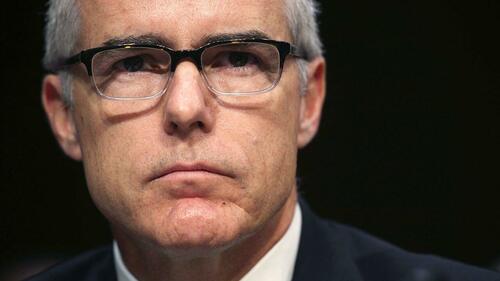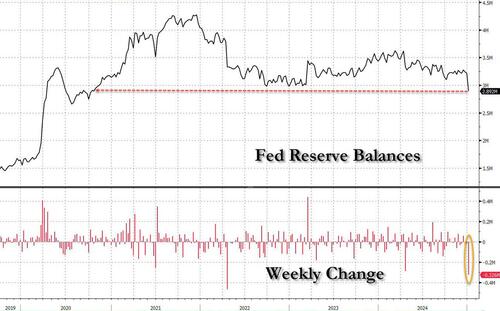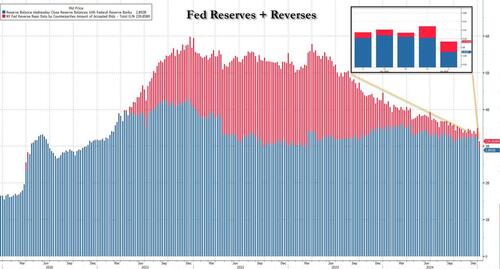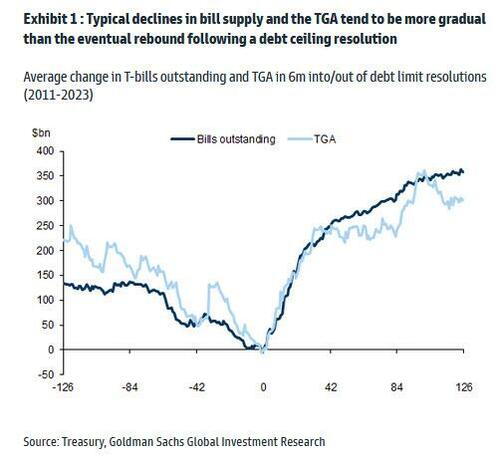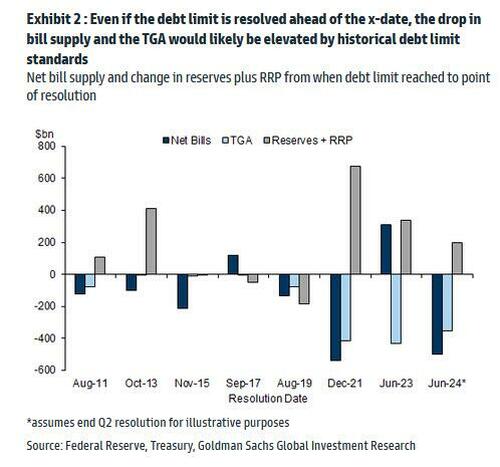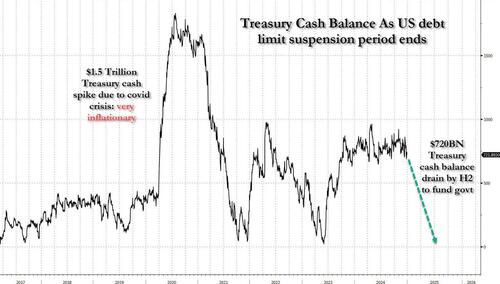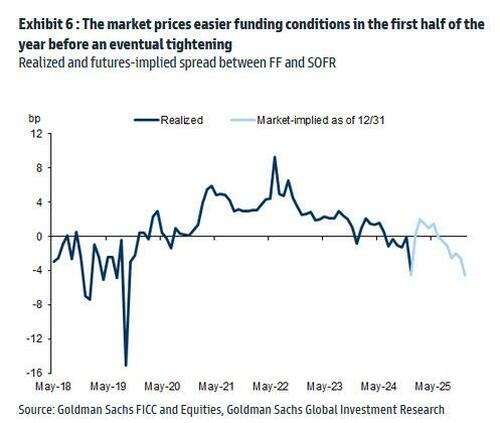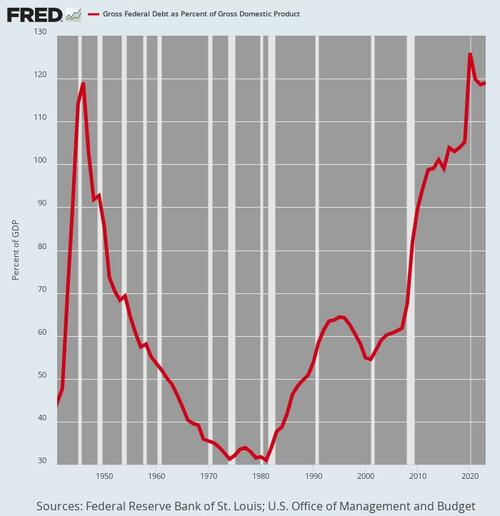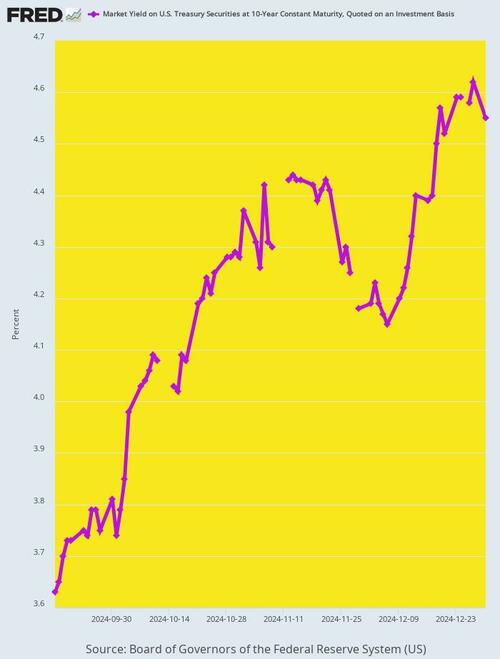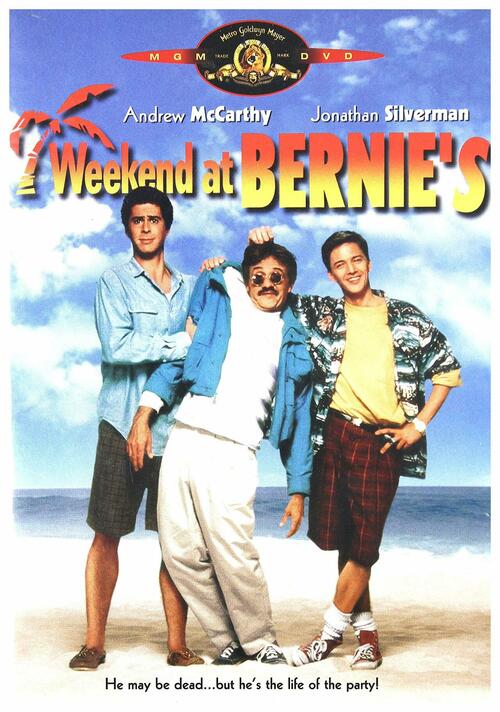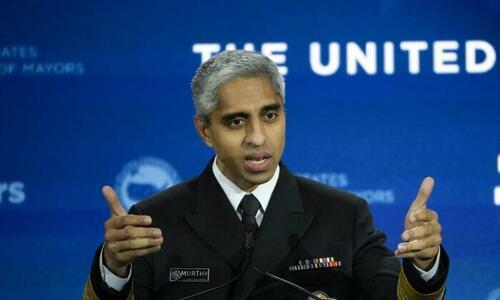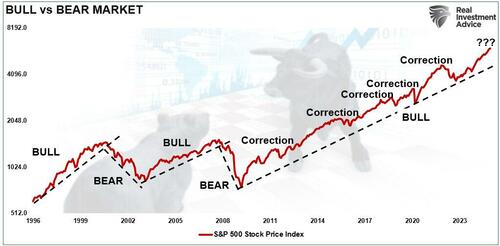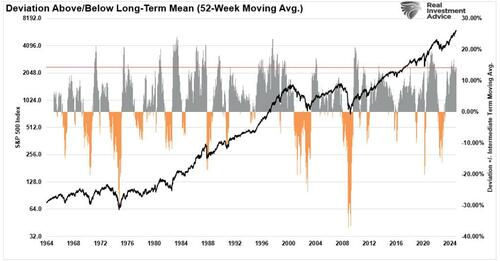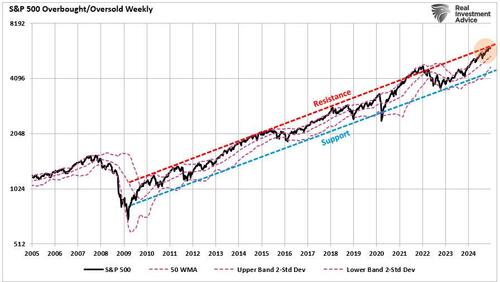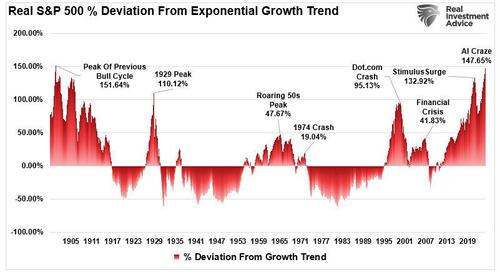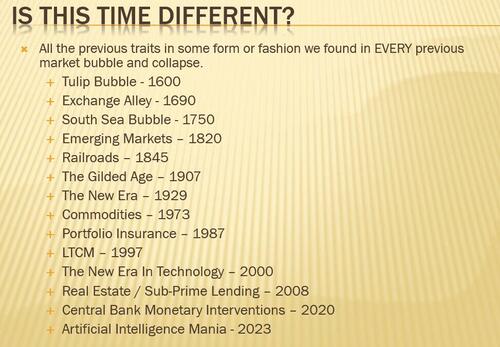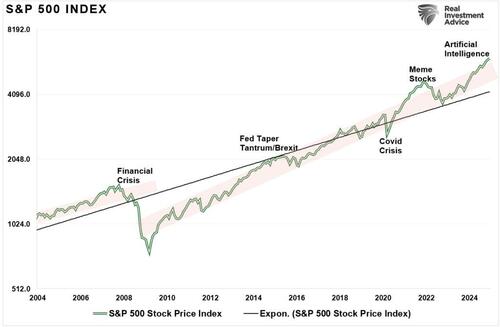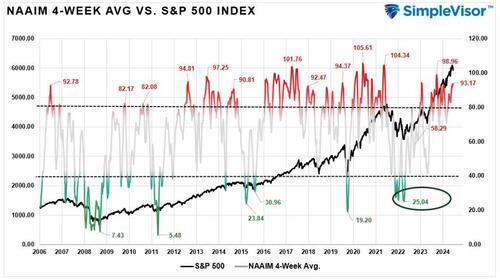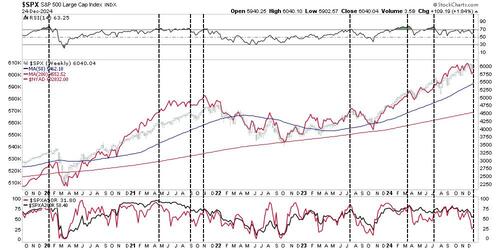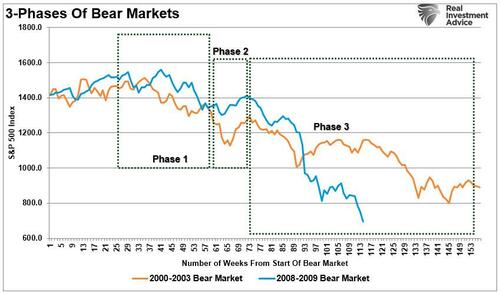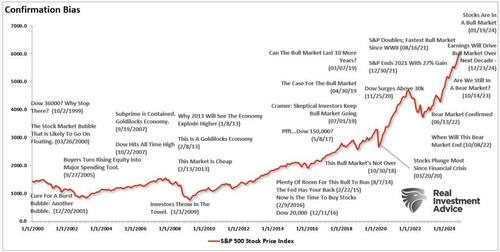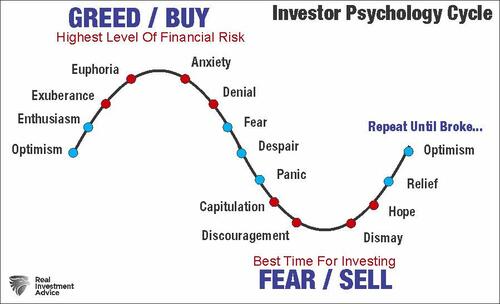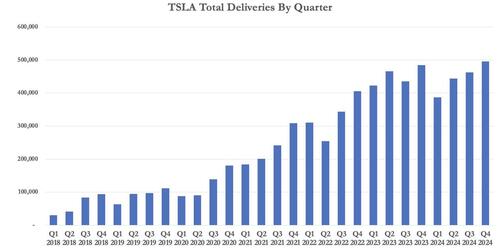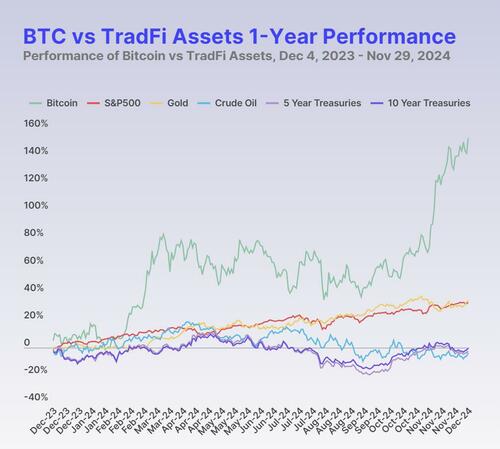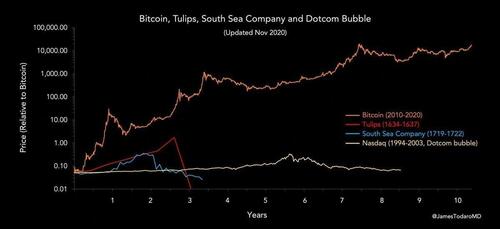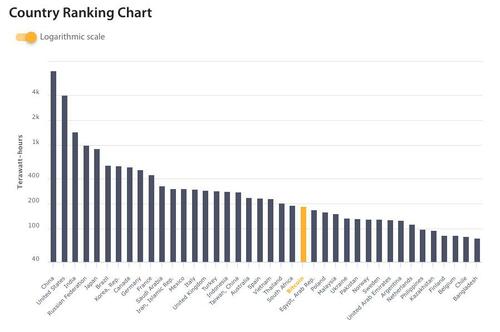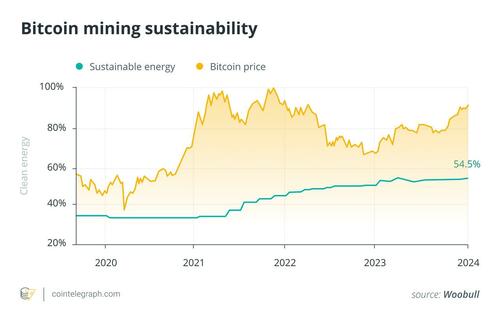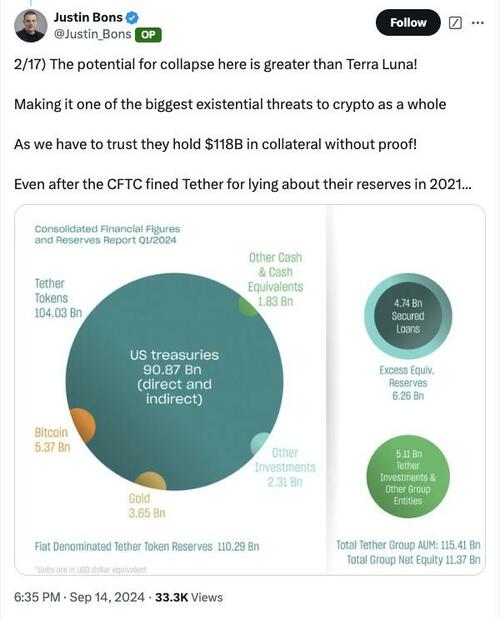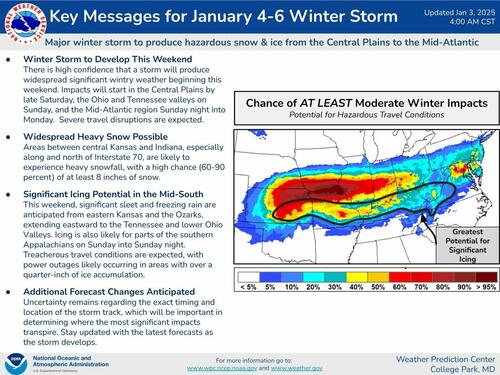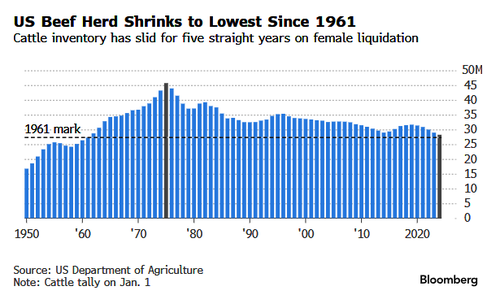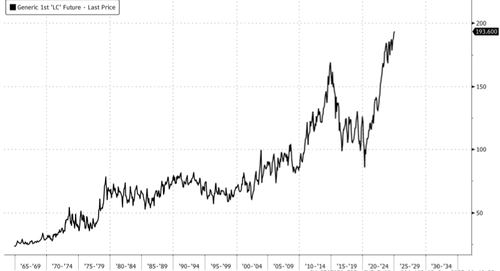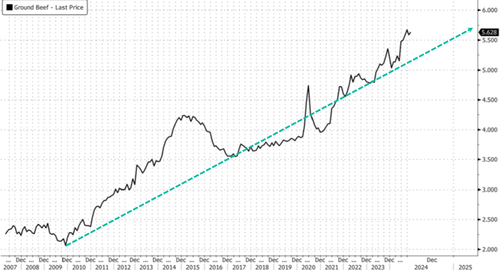McCabe’s Treasonous Attack On Trump
Authored by Jeff Carlson and Hans Mahncke via Truth Over News,
McCabe tried to re-engage Christopher Steele after Comey firing in preparation for newly fabricated investigation…
Journalist Aaron Mate released a copy of the May 16, 2017 Electronic Communication that was used to open the FBI’s formal investigation of then-President Donald Trump as a foreign agent of Russia. The document, received by Mate under a Freedom of Information request he filed, totals six pages in length and is heavily redacted.
The FBI’s opening of a new investigation of President Trump in May 2017 followed the FBI’s “Crossfire Hurricane” investigation in July 2016, which targeted the Trump campaign as a whole. This newer investigation also sought to determine whether Trump “obstructed” the FBI’s July 2016 Crossfire Hurricane investigation and/or any other “associated” investigations.
The May 16, 2017 date of the Electronic Communication remains highly relevant—particularly when we bear in mind two other specific events that surround the filing of this document: the firing of former FBI Director James Comey on May 9, 2017 by President Trump and the sudden appointment of Robert Mueller as Special Counsel on May 17, 2017.
At the opening of this new (and completely unprecedented) investigation into a sitting US President, the FBI was being led by Acting FBI Director Andrew McCabe—who can currently be found running cover for the FBI on CNN.
McCabe had been a key player in the FBI’s counterintelligence Crossfire Hurricane investigation of the Trump presidential campaign, which relied heavily on fraudulent information provided by Steele—whom McCabe likely knew from his time leading the FBI’s Eurasian Crime Squad.
McCabe was also long-time friends with Senior DOJ official Bruce Ohr—who conveniently had a personal and professional relationship with Steele that went back almost ten years.
Ohr personally brought the Steele dossier to McCabe in early August 2016. A few months later, McCabe made Ohr the FBI’s unofficial conduit to Steele after the British spy was formally fired by the FBI for ongoing contacts with the media in the fall of 2016.
As we’ll see, in the days immediately following the May 9, 2017 firing of former FBI Director James Comey by President Trump, McCabe sought to directly re-engage with Steele—once again using Bruce Ohr as the FBI’s intermediary.
On July 30, 2016, Bruce and Nellie Ohr met with Steele and an unknown associate of Steele’s. Almost immediately after the meeting, Ohr initiated an early August 2016 meeting with FBI Deputy Director McCabe to detail his conversation with Steele. Also present at the meeting was McCabe’s counsel, FBI lawyer Lisa Page, who would go on to play a key role in the counterintelligence investigation into the Trump campaign.
Shortly thereafter, on August 15, 2016, FBI agent Peter Strzok sent the now-infamous “insurance policy” text. A short while later, the FBI suddenly reached out to Steele asking for all of the information in his possession.
Steele’s formal status as a source for the FBI was short-lived. He was officially terminated as a source by the FBI on November 1, 2016 for communicating with the media—specifically, Mother Jones reporter David Corn. Steele’s meeting with Corn led to the October 31, 2016, article “A Veteran Spy Has Given the FBI Information Alleging a Russian Operation to Cultivate Donald Trump,” which provided the first public reporting on the existence of the fraudulent Steele dossier.
But despite his formal firing, the FBI still wanted to receive information from Steele that could be used against Trump. Ohr, who was serving as the highest-ranking career official in the DOJ, played a pivotal role in passing on the unfounded allegations against Trump from Steele and Fusion GPS co-founder Glenn Simpson to the FBI.
Ohr would later testify that he had known Steele since 2007, when they met during an “official meeting” while Steele was still employed by the British government. After that, they maintained contact approximately “once a year.”
Ohr had also met with Fusion’s “Simpson on various occasions over the years” and his wife, Nellie Ohr, was actively working for Simpson’s firm as an open-source researcher on Trump. A 2010 report by the National Institute of Justice listed all three as participants in a paper.
Interactions between Ohr—who at the time was associate deputy attorney general—and Steele were so frequent that Ohr was assigned an FBI handler, agent Joe Pientka, who summarized Ohr’s conversations with Steele in FBI FD-302 forms.
The 302s of Ohr’s conversations with Steele ran from November 22, 2016 (just after the presidential election), to May 15, 2017—just one day before the FBI’s above-mentioned May 16, 2017 investigation into President Trump was officially opened. Although the FBI’s 302s ended on May 15th, Ohr later testified that he maintained contact with Steele and relayed those conversations to the FBI into November 2017.
Q: “On page 2 of the letter it lists 12 separate dates and 302s where the FBI interviewed you indicating the first interview took place on November 22, 2016, and the last one on May 15, 2017. Is this list of interviews and dates generally consistent with your recollection?”
Ohr: “Yes. The caveat I would say is, I continued to have some conversations with Christopher Steele after May 15, 2017. I’ve reported all of those to the FBI, but I do not see any 302s relating to those conversations.”
The information flow between Ohr and Steele typically went in one direction. Steele would provide information to Ohr, who would then provide it to the FBI. But in May 2017, the direction suddenly changed when the FBI decided to reach out to Steele in the wake of Comey’s firing:
Ohr: “The FBI had asked me a few days before, when I reported to them my latest conversation with Chris Steele—next time you talk with him, could you ask him if he would be willing to meet again.”
Q: “So this is the re-engagement?”
Ohr: “Yes.”
The texts being referenced in Ohr’s testimony were sent on May 12 through May 15, 2017 and refer to the request that Ohr received from the FBI to seek Steele’s re-engagement. It’s worth re-emphasizing that the FBI’s request occurred in the days immediately following Comey’s May 9, 2017 firing.
What is even more notable is that Steele’s professed source, Igor Danchenko, disavowed the dossier during a January 2017 FBI interview, confessing that the so-called “’intelligence” it contained was nothing more than barroom gossip from his childhood friends in Russia. What was the purpose of re-engaging Steele at this stage, given that the FBI already knew his entire dossier was a pack of lies? The only plausible explanation is that the FBI needed to ensure that Steele was aligned with their objective–which was to remove Trump.
On May 12, 2017, Ohr and Steele exchanged a series of text messages that show Ohr reaching out to Steele following the FBI’s request for re-engagement:
Ohr: “Thanks again for your time on Wednesday. Do you have time for a short follow up call sometime this weekend?”
Steele: “Yes, of course. Perhaps sometime tomorrow. When might suit?”
Ohr: “Would 3 pm your time work? I’m pretty open so just let me know. Thanks!”
Steele: “Fine, or possibly even at 2 pm our time if that works for you? Best”
Ohr: “2 pm your time is good. It will be quick. Thanks!”
The next text message is a response from Steele on May 15, 2017:
Steele: “B, having now consulted my wife and business partner about the question we discussed on Saturday I’m pleased to say yes, we should go ahead with it. Best C”
Ohr: “Thanks! I will let them know and we will follow up.”
Ohr is obviously referring to the FBI in his last message. The sudden firing of Comey appears to have been the precipitating event that led Acting Director McCabe and the FBI to suddenly re-establish contact with Steele. As this contact was being initiated by Ohr, the new FBI investigation into President Trump was formally opened by the FBI on May 16, 2017.
This seemingly irrational behavior by McCabe—the direct targeting of a sitting president of the United States—may have led directly to the appointment of Robert Mueller as Special Counsel the very next day, on May 17, 2017.
Indeed, text messages to Ohr from Steele provide some hints and highlight an abrupt pullback by the FBI. In June 2017, Steele sent Ohr the following text:
“We are frustrated with how long this re-engagement with the Bureau and Mueller is taking. There are some new perishable operational opportunities we do not want to miss out on.”
Steele sent another text to Ohr on Nov. 18, 2017:
“I am presuming you’ve heard nothing back from your SC colleagues on the issue you kindly put to them for me. We have heard nothing from them either. To say this is disappointing would be an understatement.”
Although McCabe likes to maintain the pretense of being a political victim, the truth is much harsher. McCabe was fired from his position for lying to the FBI’s Office of Professional Responsibility, to agents from the FBI’s Inspection Division and to the DOJ’s Inspector General, Michael Horowitz.
Indeed, Inspector General Horowitz determined in a February 2018 report that McCabe lied at least three times under oath regarding his leaks to the media—leading Horowitz to issue a formal referral to the FBI regarding McCabe’s conduct. McCabe was ultimately fired by the FBI on March 16, 2018.
Interestingly, former FBI Director James Comey was fired by President Trump on the very same day (May 9, 2017) that McCabe was initially interviewed by agents from the FBI’s Inspection Division (INSD) regarding his leaks to the media. McCabe lied to the INSD agents regarding his participation in the leaks and in the process of uncovering McCabe’s deception the IG also discovered the massive series of text messages sent between Strzok and Lisa Page.
McCabe was also instrumental in running cover for Hillary Clinton during the FBI’s investigation of her use of a personal email server.
His wife, Dr. Jill McCabe, ran for a State Senate seat in Virginia in 2015. She had no prior political experience. The McCabe’s took $468k in campaign contributions from long-time friend and political ally of the Clinton family, Virginia Governor Terry McAuliffe, who met with the McCabe’s on March 7, 2015. The ostensible purpose of the meeting was to convince Jill McCabe to run for office – her first run at any public office.
Conspicuously, Clinton’s private server had just been uncovered by the New York Times on March 2, 2015 – five days before McAuliffe’s first meeting with the McCabe’s. McAuliffe’s contributions represented more than a third of the total contributions raised by Jill McCabe’s campaign. She lost the race despite heavy funding and an endorsement by the Washington Post.
Interestingly, McAuliffe himself was under investigation by the FBI – at exactly the same time – for donations made to his campaign:
The investigation is examining $120,000 of donations to the Democratic governor’s campaign and inauguration made by U.S.-based companies controlled by Chinese businessman Wang Wenliang.
Another of Mr. Wang’s companies, Rilin Enterprises, has donated between $1 million and $5 million to the Clinton Foundation. The investigation dates to at least last year.
The FBI investigation into Clinton’s use of a private email server was formally launched on July 10, 2015. At the end of July 2015, Andrew McCabe was suddenly promoted to the number three position within the FBI. In the middle of October 2015, McCabe emailed investigators that Clinton would get an “HQ Special” – special or lenient treatment.
McCabe’s office initially provided personnel and resources to the Clinton email investigation, but when matters heated up, McCabe took personal control of the Clinton email investigation on Feb 1, 2016. Despite pressure from Congress and the American public, McCabe refused to recuse himself from the Clinton investigation until just one week before the 2016 election.
McCabe is long gone from the FBI, along with the entirety of the FBI’s leadership from the 2016-2017 period but nothing has changed at a fundamental level. The FBI remains a corrupted institution that exists only to protect the members of the Establishment and the status quo.
In his release of the heavily redacted Electronic Communication, Mate noted that he was “most interested to learn the factual basis for the FBI taking the extraordinary step…of investigating the sitting president as an agent of Russia. But that part is entirely redacted.”
The intentional and unwarranted obfuscation by the FBI continues unabated. Incoming FBI Director Kash Patel and the rest of the new Trump Administration can’t begin soon enough.
Tyler Durden
Fri, 01/03/2025 – 13:45
via ZeroHedge News https://ift.tt/TwxWCjU Tyler Durden
